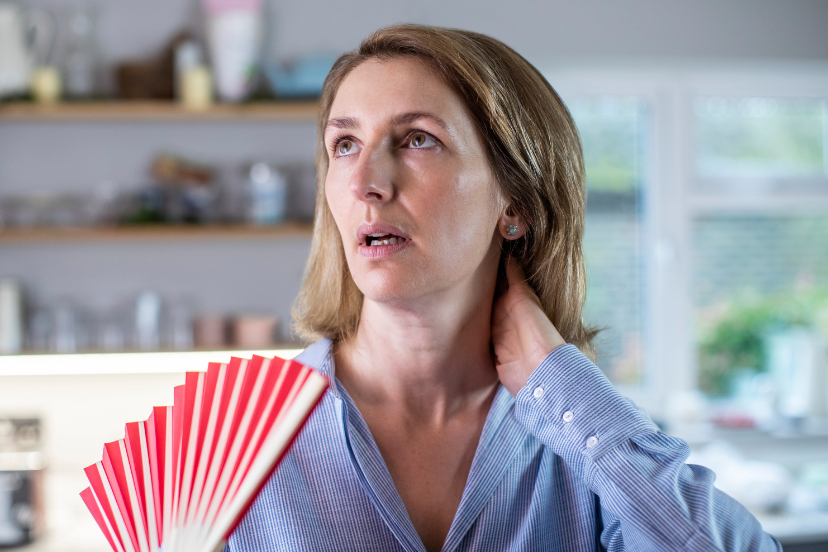Osteoporosis in Postmenopause: Bone Health Beyond Menopause
Introduction
What is osteoporosis in postmenopause? Brace yourselves as we unravel the mysteries of this bone-thinning condition, arming you with knowledge and strategies to conquer it with confidence and resilience. Let’s dive deep into the bone zone and discover how to keep your skeleton strong and sturdy through the postmenopausal journey.
Osteoporosis in Postmenopause
Osteoporosis in postmenopause poses significant health challenges for women worldwide. As estrogen levels decline during menopause, bone density diminishes, rendering individuals more susceptible to fractures and skeletal complications. Understanding the dynamics of this condition is pivotal for informed decision-making and proactive healthcare management.
During postmenopause, the body undergoes profound hormonal shifts, leading to accelerated bone loss and increased fracture risk. The depletion of estrogen, a hormone crucial for maintaining bone strength, contributes to the onset and progression of osteoporosis. Consequently, women in this phase of life must prioritize bone health through lifestyle modifications, dietary interventions, and medical guidance.
The Impact of Osteoporosis in Postmenopause
The repercussions of osteoporosis in postmenopause extend beyond physical discomfort, encompassing emotional and social dimensions. Fractures resulting from compromised bone integrity can impede mobility, erode self-confidence, and diminish overall quality of life. The fear of falls looms large, casting a shadow of apprehension over daily activities and recreational pursuits.
Bone Health: A Balancing Act
Maintaining optimal bone health in postmenopause requires a multifaceted approach, blending dietary diligence, exercise regimens, and medical interventions. Striking a balance between calcium intake, vitamin D synthesis, and weight-bearing exercises is paramount for preserving bone density and structural integrity.
Nutritional Strategies for Bone Health
Embracing a bone-friendly diet rich in calcium, vitamin D, and other essential nutrients is instrumental in fortifying skeletal resilience. Incorporate dairy products, leafy greens, fortified cereals, and seafood into your culinary repertoire to bolster bone strength and vitality.
Calcium-Rich Foods
- Dairy Products: Milk, yogurt, cheese
- Leafy Greens: Kale, spinach, collard greens
- Fortified Foods: Orange juice, breakfast cereals
- Seafood: Salmon, sardines, shrimp
Vitamin D Sources
- Sunlight Exposure
- Fatty Fish: Tuna, mackerel, salmon
- Egg Yolks
- Fortified Foods: Milk, cereal, orange juice
Supplements: A Supplemental Approach
In cases where dietary sources fall short, supplementation may serve as a viable adjunct to fortify calcium and vitamin D levels. Consultation with a healthcare professional is advisable to determine the appropriate dosage and regimen tailored to your individual needs.
FAQs About Osteoporosis in Postmenopause
1. What are the risk factors for developing osteoporosis in postmenopause?
- Age: Risk increases with advancing age.
- Menopause: Decline in estrogen levels accelerates bone loss.
- Family History: Genetic predisposition plays a significant role.
- Lifestyle Factors: Sedentary lifestyle, smoking, excessive alcohol consumption.
2. How can I prevent osteoporosis in postmenopause?
- Engage in weight-bearing exercises regularly.
- Consume a balanced diet rich in calcium and vitamin D.
- Avoid smoking and limit alcohol intake.
- Undergo regular bone density screenings and medical check-ups.
3. What are the complications associated with osteoporosis-related fractures?
- Chronic Pain: Fractures may result in persistent discomfort.
- Decreased Mobility: Impaired movement and functional limitations.
- Reduced Independence: Dependency on assistive devices or caregivers.
4. Are there any natural remedies or alternative therapies for managing osteoporosis?
- Herbal Supplements: Some herbs may offer mild benefits but lack substantial scientific evidence.
- Acupuncture: Limited research suggests potential for pain relief and improved mobility.
- Tai Chi: Gentle exercise modality associated with enhanced balance and coordination.
5. Can osteoporosis be reversed or cured?
- While osteoporosis cannot be fully reversed, its progression can be slowed or halted through proactive measures.
- Treatment modalities focus on preventing fractures, preserving bone density, and enhancing overall quality of life.
6. How does hormone replacement therapy (HRT) impact osteoporosis in postmenopause?
- HRT, particularly estrogen therapy, has shown efficacy in mitigating bone loss and reducing fracture risk.
- However, potential risks and side effects must be carefully weighed against the benefits, necessitating individualized decision-making in consultation with healthcare providers.
Conclusion
In conclusion, osteoporosis in postmenopause presents formidable challenges, but with knowledge, proactive interventions, and a comprehensive healthcare approach, individuals can effectively manage and mitigate its impact. By prioritizing bone health, embracing healthy lifestyle practices, and seeking timely medical guidance, women can navigate this phase of life with resilience, vitality, and confidence. Remember, empowerment begins with education, and together, we can build a future where osteoporosis is not a barrier but a conquerable challenge.




